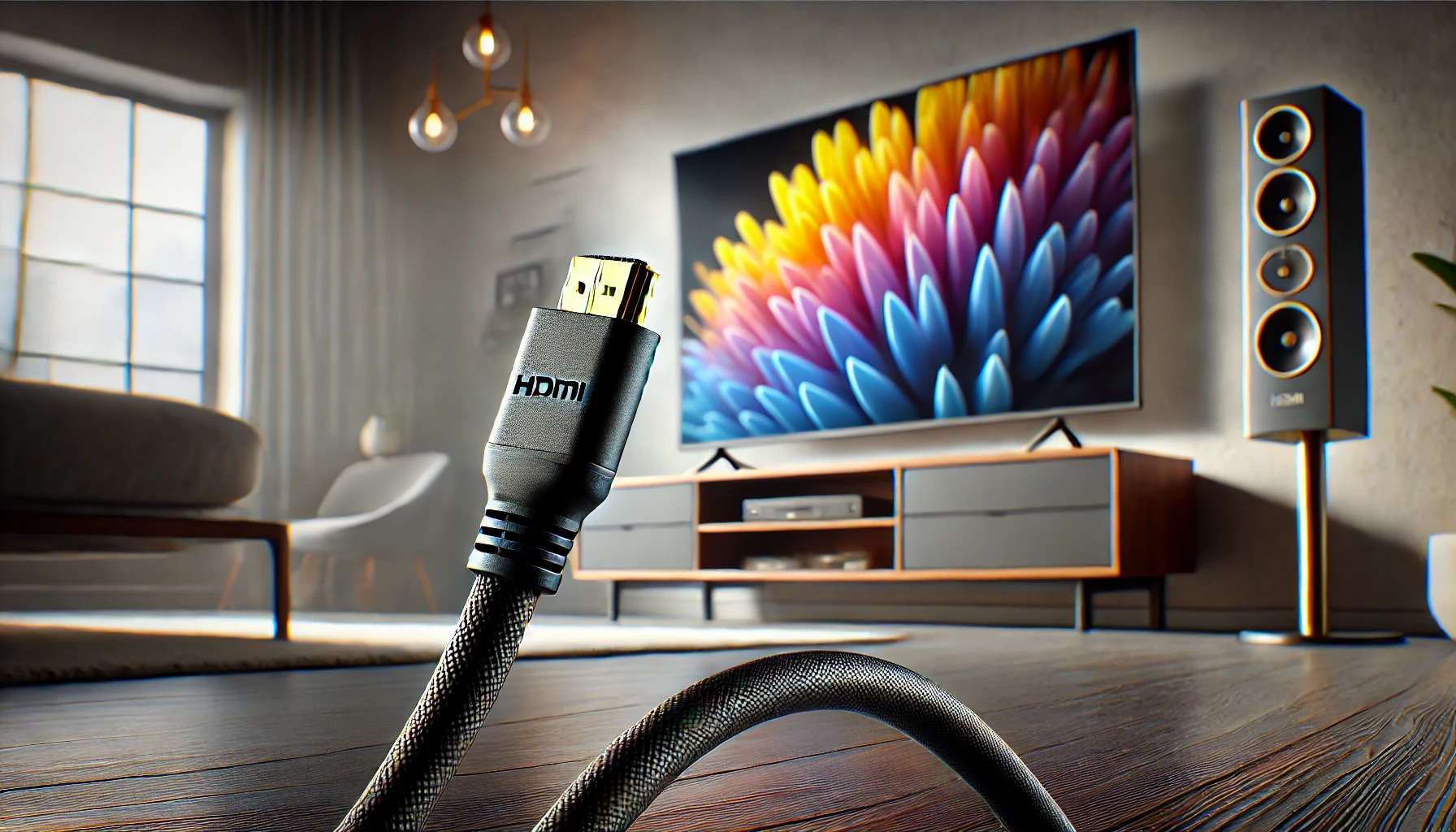In today’s digital era, the quality of your viewing experience relies not only on your TV’s resolution but also on the cables that connect your devices. Among these, HDMI (High-Definition Multimedia Interface) cables have become the gold standard for transmitting high-quality audio and video signals. But why is choosing the right HDMI cable for your TV so important? This guide explores the fundamentals of HDMI cables, helping you make an informed decision for your entertainment setup.
Introduction to HDMI Cables for TV
An HDMI cable is a vital accessory in any home theater system. It connects devices like TVs, gaming consoles, Blu-ray players, and sound systems, enabling seamless transmission of audio and video signals. Unlike older analog connections, HDMI cables ensure that both sound and picture are delivered digitally, maintaining pristine quality.
When paired with modern TVs that support resolutions like 4K, 8K, or HDR (High Dynamic Range), an HDMI cable acts as a bridge, unlocking the full potential of your device. With features like ultra-high-speed transmission, support for Dolby Atmos, and compatibility with multiple devices, HDMI cables have revolutionized how we enjoy media. However, not all HDMI cables are created equal—choosing the right one for your TV is crucial for optimizing performance and compatibility.
Description of HDMI Cables for TV
1. Types of HDMI Cables
HDMI cables come in various types, each catering to specific needs:
- Standard HDMI Cables: Suitable for older HDTVs, these cables support resolutions up to 1080i or 720p. They are best for basic setups without high-resolution requirements.
- High-Speed HDMI Cables: Designed for 4K TVs, gaming consoles, and streaming devices, these cables support resolutions up to 4K at 60Hz, with additional support for HDR and 3D content.
- Ultra-High-Speed HDMI Cables: Ideal for next-gen TVs and consoles, these cables support 8K resolution at 60Hz or 4K at 120Hz. They also ensure reduced latency, making them perfect for gamers.
- Active HDMI Cables: These cables use signal boosters to maintain signal quality over longer distances, ensuring no loss in audio or video fidelity.
2. Key Features
Modern HDMI cables boast an array of features that enhance your viewing and listening experience:
- Audio and Video Synchronization: HDMI cables transmit audio and video simultaneously, ensuring no delays or desynchronization.
- Support for Advanced Audio Codecs: They can carry surround sound formats like Dolby Atmos and DTS:X, delivering immersive soundscapes.
- Enhanced Gaming Features: Some HDMI cables include variable refresh rate (VRR) and auto low latency mode (ALLM), providing smoother gameplay with minimal lag.
- Backward Compatibility: HDMI cables are compatible with older devices, making them versatile additions to your entertainment setup.
3. Length and Build Quality
The length of the cable matters, especially in larger setups. Short cables (under 6 feet) are ideal for close-proximity connections, while longer cables (up to 50 feet) might require active signal boosters to prevent degradation. Build quality is equally important; look for cables with durable jackets, gold-plated connectors, and shielded wiring to ensure longevity and consistent performance.
4. Use Cases
- Streaming: HDMI cables are essential for streaming from devices like Roku, Apple TV, or Fire Stick, offering lag-free, high-quality playback.
- Gaming: Whether you’re using a PlayStation 5, Xbox Series X, or a gaming PC, the right HDMI cable ensures responsive gameplay and stunning visuals.
- Professional Settings: HDMI cables also find use in professional environments, like conference rooms, where clear displays and smooth presentations are crucial.
Specifications of HDMI Cables for TV
| Feature | Details |
|---|---|
| Supported Resolutions | Up to 8K (7680×4320) at 60Hz |
| Bandwidth | 48 Gbps (for Ultra-High-Speed HDMI) |
| Audio Support | Dolby Atmos, DTS:X |
| Length | 3 feet to 50 feet (active cables for longer distances) |
| Compatibility | Backward compatible with HDMI 1.4 and 2.0 |
Reasons to Buy and Avoid HDMI Cables for TV
Reasons to Buy
- High-Quality Audio and Video: HDMI cables preserve the quality of both sound and visuals, offering a superior viewing experience.
- Future-Proofing: Ultra-High-Speed HDMI cables are compatible with the latest devices, ensuring you won’t need frequent upgrades.
- Ease of Use: With a single cable handling both audio and video, setup is straightforward and clutter-free.
Reasons to Avoid
- Overpriced Options: Not all expensive HDMI cables offer additional benefits. Always compare features with pricing.
- Compatibility Issues: Using older HDMI cables with modern devices may lead to subpar performance or incompatibility.
FAQs About HDMI Cables for TV
1. Do I need a special HDMI cable for 4K TVs?
Yes, a high-speed HDMI cable is recommended for 4K TVs to support the higher resolution and refresh rates.
2. What is the difference between HDMI 2.0 and HDMI 2.1?
HDMI 2.1 supports higher resolutions (up to 8K), increased bandwidth (48 Gbps), and features like VRR and ALLM, which HDMI 2.0 lacks.
3. Can an HDMI cable improve sound quality?
While HDMI cables don’t enhance sound quality directly, they transmit uncompressed audio formats like Dolby Atmos, which improves the listening experience.
4. How long can an HDMI cable be without losing quality?
Passive HDMI cables maintain quality up to 25 feet. For longer distances, consider active HDMI cables.
5. Are expensive HDMI cables worth it?
Not necessarily. Focus on specifications and build quality rather than price, as many affordable options perform equally well.
In conclusion, HDMI cables are indispensable for modern home entertainment systems, ensuring a seamless and immersive viewing experience. By understanding the types, features, and specifications of HDMI cables, you can select one that aligns with your needs and budget. Happy watching!

